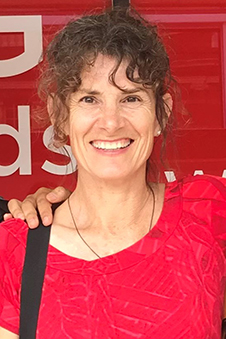Health initiatives in rural areas need to be geographically tailored, culturally anchored, and locally driven, academics argue.
The group of University of Otago and University of Waikato researchers studied health providers in rural Māori and Pasifika communities during the COVID-19 vaccination rollout. They uncovered the challenges they faced but also found ways to ensure the effectiveness of any future health promotion programmes.
Rural residents in Aotearoa New Zealand are known to have worse health outcomes than their urban counterparts, and were identified as an at-risk population during the pandemic. Despite this, disparities have been found between rural and urban vaccination rates.
The study, published in the Journal of Primary Health Care, aimed to gain insight into factors contributing to this disparity by exploring the experiences of those ‘on the ground’ during the pandemic response.

Associate Professor Kati Blattner.
Lead author Associate Professor Kati Blattner, of Otago’s Department of General Practice and Rural Health and Va’a O Tautai, Centre for Pacific Health, says common issues were identified.
“The rural vaccine rollout was developed without consideration of the rural context or effective engagement with rural health providers. Challenges multiplied on rural roads with geographical distance, small low-density populations, dire workforce shortages and limited infrastructure including phone and internet connectivity,” she says.
Realising misalignment with their context was hindering progress, rural health providers took ownership of the rollout, entrusting established ways of working and engaging their communities and external Māori or Pasifika networks, enabling innovative local solutions to arise.
“We found three overarching factors influencing the vaccine rollout rurally: geographical tailoring, cultural anchoring, and local control,” Dr Blattner says.
The interaction between these three factors was as important as the role played by each one.
“Rural places are not miniature cities – the smaller and more remote the community, the more important that health services are integrated, which requires bundled rather than fragmented administrative and regulatory frameworks and resources.
“Bundling requires a move away from siloed funding for strands of activity to a whole-of-service, community-led approach.
“Successful rural vaccine rollouts should not be built on specific immunisation programmes, but rather on strong, resilient rural health services.”
However, despite demonstrating capability for rolling out a national initiative while continuing to operate their services as usual, Dr Blattner says no sustained investment in rural health services was forthcoming.
“We hope the voices of the health workers and their communities covered by the research are represented loudly enough that this will lead to a better understanding of their rural context and their health services for those based centrally, particularly policy makers and programme funders.
“New Zealand needs sustained investment in rural health services, which are designed for rural contexts and capable of meeting the needs of diverse rural communities.”
Publication details
He Aroka Urutā. Rural health provider perspectives of the COVID-19 vaccination rollout in rural Aotearoa New Zealand with a focus on Māori and Pasifika communities: a qualitative study
Katharina Blattner, Lynne Clay, Rawiri Keenan, Jane Taafaki, Sue Crengle, Garry Nixon, Kiri Fortune and Tim Stokes
Journal of Primary Health Care